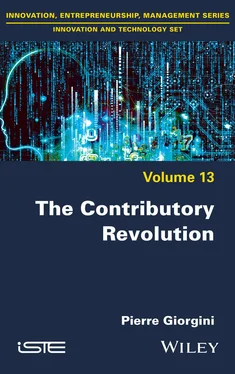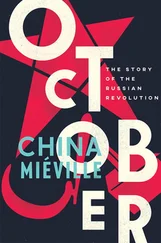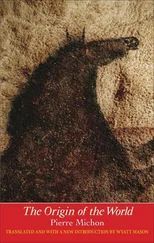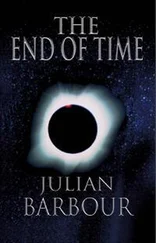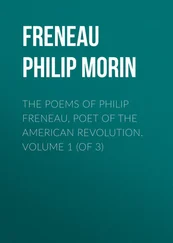It is important to note that in real life, the systems encountered will, for the most part, be hybrids of these two conceptions, notably depending on the scale at which we will be conceiving or observing them.
1.4. The epistemological mutation of the sciences
The epistemology of science is an exciting study and one which is of renewed interest today, as the question of the boundary between physics and metaphysics is at the heart of contemporary debate. This stems, in particular, from the increasingly shared sense, when looking closely at the current technoscientific revolution, that we are entering not into the unknown, but into the unknowable. It is hard to believe what is happening. The constantly updated work on the origin of knowledge and the understanding of its deep mechanisms of constitution is increasingly indispensable for understanding and analyzing the contemporary world, not least owing to the emergence of the most bizarre scenarios about the exo-somatization of capacities of the human brain. “Even if we could hope to understand everything, then we will have to understand what it means to understand” (Mark Planck’s 1944 speech).
I would like to put forward here the idea – which will be substantiated in the rest of the book – that the constitution of knowledge at the heart of the mathematical–physical relationship is fundamentally exo-distributive, whereas what is at work in the life sciences is by nature endo-contributive. Indeed, there is an epistemological divide between the sciences of inert matter, based essentially on physics as a relationship to reality, and those of the living world sustained by biology. To defend this point of view, which we will be further developed in the following chapters, it is appropriate to briefly return to the foundations and history of knowledge.
The reading of two books and a series of interviews have recently advanced and challenged my thinking on the subject of the epistemology of science. These works will be widely cited in the sections that follow: Quantum Physics, a Philosophy (Bitbol 2008) and Mathematics and Natural Sciences (Bailly and Longo 2011). Indeed, these readings have led me to consider further some of my earlier convictions or intuitions, and have also overturned some of them.
The first is the role played by the mobility achieved by humans in particular, who, at the top of the pyramid of living things, have been able to abstract themselves from their physical relationship to time and space, to derive the first spatio-temporal formalisms. This is a genesis of formalisms first of all, very much linked to sensory perceptions, such as toying with infinite continuity, the perception of the successor in time or space as the initiator of the succession of whole numbers, then the emergence of proportions opening on to the fraction. Its combination with the concept of the successor, leading to rational numbers. We can also cite the concept of the straight line as the shortest path from one point to another, the circle and so on. Each time, as Bailly and Longo (2011) tell us, a formal construction principle is put into action and by its confrontation with the principle of proof, acquires its status of “truth”. Thus, principles of construction and principles of proof are intimately linked. Within mathematics itself, this applies between semantics and syntax or logicism, and also between mathematics and experimental physics. In addition, other ancient notions, which will be mathematized much later, will appear, some as a condition of the survival for mankind. For example, the notion of causality, and which causes induce which effects. There is no smoke without fire; the sudden fleeing of a flock can indicate the presence of a dangerous predator, and so on. Another notion arose from sensory experience well before its mathematization: the probability that something will occur. Agrarian societies soon learned the idea of the likelihood that it would rain; today, we would talk of probability based on a certain number of factors, but it would be without certainty.
But this process is not only deductive; it is also inductive, when experience and measurement require an evolution of formalism. This leads to a fruitful interaction through co-fertilization, through the “physicalization” of mathematics. Direct access to tangible reality, to experimentation and direct measurements, where the observable and the measurable merge, will exhaust this phase of the history of physical sciences, with Newtonian physics at its peak. We could say that this whole process will conform to the principle of intuition. What is born in the principle of construction does not betray the practical criteria of intuition: Euclidean space and its geometry, an arithmetic that does not question the fundamentals of what is shown by sensory experience, succession, commutativity, parallel lines that never intersect, etc.
However, this scientific development will, almost as a side benefit, generate observation tools that will increase the scope of phenomena subject to human scrutiny. The telescope will reveal the invisible of the infinitely large (astrophysics) and microscopy, or the tools of electromagnetic experimentation and measurement, the invisible of the infinitely small. Galileo will assert in a completely counter-intuitive way that the Sun does not revolve around the Earth but rather the opposite. It is the passage from geocentrism to heliocentrism. Then the game of co-fertilization between mathematics and physics will literally explode and give rise to new formalisms that are increasingly counter-intuitive. They will no longer conform to the principles emanating from the relationship to the visible and temporal world, perceived directly by the human senses. They will be efficient, however, because they will allow the formal construction to legitimize itself in the principles of proof through measurement and indirect observation. We will see, moreover, that in certain cases these devices can no longer be thought of as neutral and transparent, not intervening on the observed reality, but only transcribing by observation and measurement a faithful part of this reality (which is no longer the case in quantum physics, for example).
But this legitimacy through evidence or experience will remain inevitably partial. This is moreover a first elementary principle of incompleteness. We will return to it because, however multiple it may be, experience will remain discrete (discontinuous and countable) in this world of the invisible and will never completely cover the whole continuous field, theoretically covered by formalism itself. Experience will tell us that this principle is verified here and there, while never being able to prove that this is true everywhere and always.
There are many examples of theories leading to counter-intuitive principles of proof. For mathematics, this is the case of the body of complex numbers which escape the relationship of order and successor, the matrix formalism which furthermore escapes the principle of commutativity of the product, non-commutative geometry, geometric algebra which axiomatizes the fact that two parallel lines intersect at infinity, Hilbert’s N-dimensional spaces, etc. Their equivalents in physics can also be mentioned, with general relativity, which upsets our intuitive reference points in terms of space–time, or quantum physics with non-locality, for example, or Heisenberg’s uncertainty principle (the more we know the position of a particle, the less we can determine its speed and vice versa), or string theory requiring a 10-dimensional geometric formalism.
Here again, we will have the emergence of new principles of uncertainty linked to the fact that, in reality, it is impossible to measure each of the operators of a complex number or matrix, but only their product, or their square, or their linear combination in the space of real numbers, as their name indicates. The same is true for 10-dimensional spaces, whose reduction can only be observed by projection into a three- or four-dimensional space. This introduces an intrinsic distance between the “deterministic truth” of a theory and the uncertainty of the principles of proof. Knowing the product of two variables is not enough to determine the value of each variable. For example, the appearance of probabilistic variables makes it impossible to reproduce experiments with strictly the same initial conditions giving strictly the same result. On the other hand, it can be observed that two absolutely identical results in the experiment can come from two completely different situations in formal terms.
Читать дальше
